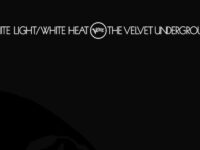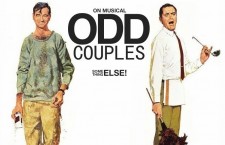Those who consider themselves hardcore Velvet Underground fans can probably skip this review — because no matter what’s said, they’ll want this anyway. In fact, they probably already have versions of most of it on compilations or boots. And for those who dismiss out of hand anything by Lou Reed and company as just noisy weirdo rock — well, this won’t change your mind either.
But for those who wonder what all the fuss is about over a short-lived band, and one of their records that only managed to limp into spot No. 199 on the Top 200 charts for a week back in 1968 — well, you’ve come this far, so read ahead.
Most people interested in rock history know some variation of the story concerning the Velvet Underground’s 1967 debut album — the one with Andy Warhol listed as “producer” and Nico listed as “chanteuse.” Lou Reed’s stark lyrical depiction of the sleazy side of New York in combination with the sometimes odd musical phrasing of John Cale’s viola, Maureen Tucker’s unorthodox drumming style, Nico’s strangely compelling Teutonic vocal takes and the rock ‘n’ roll guitar tag team of Lou and Sterling Morrison was a combination too intense for many otherwise hip music fans back in the Summer of Love era circa 1967.
But if the Velvet’s debut flew in the face of the niceties of hippie culture, the follow up album White Light/White Heat took on everything else. In the mid to late 1960s, you often hear of musicians referring to the recording studio as “another instrument.” In that case, the VU must have been using the studio as a wrecking ball — or maybe a front end loader, piling layers upon layers of murk in all departments: writing, playing, singing, recording and general “don’t give a rat’s ass” nose-thumbing. Leaving Warhol behind (and Nico as well), the band was free to play as loud and over the top as they wanted to play.
And so they opened with the title track, a rock ‘n’ roll drug song; followed by a reading of the story “The Gift” (where we find out that “Waldo Jeffers had reached his limit”); a song about Lady Godiva’s botched lobotomy; and as a side closer, a strange, out-of-left field kind of “normal” song, “Here She Comes Now.” Each track on side one predicts the sound of punk and DIY alternative rock that would be commonplace about a decade later — and even then it’s hard to say if things ever got anymore punkier or more alternative.
But side one, amazing as it is, turns out to be just prep work for side two. The opening number here is “I Heard Her Call My Name,” and contains maybe the most mind-bending guitar solo ever recorded. Ever. It really is the sound that Reed sings about in the last line, “And then my mind split open” — totally loud, rude, feral and dangerous. Only there’s still the rest of the side to fill up, and how does one follow a side opener like that? Easy — with a side closer. Cue in Reed’s sex and drugs and sex and sailors and sex and death epic “Sister Ray,” the 17-minute massacre that finishes out the album.
It’s rumored that producer-in-name Tom Wilson left the studio somewhere in the middle of it all, likely to save his sanity or his hearing, or maybe both. The Velvets start off by playing this song as a standard three chord riff in standard 4/4 time, but eventually it degenerates into one chord and a pulse and Reed deconstructing his own words about the sailors and the drugs and the shooting: “Don’t you know you’ll stain the carpet?,” “I’m busy searching for my mainline,” and, “Just like/Amph-ph-ph-ph-phetimine.”
For many years, this album was out of print, but when interest in the Velvets resurged due to all the popular alt rock groups that cited the VU as an influence in the 1980s and ’90s, all of their original albums were finally released on CD. Nowadays, it’s common to see classic albums repackaged with bonus tracks and extensive liner notes, and WL/WH is no exception. The remastered stereo version has more clarity than the 1996 remaster, but it may not make any difference considering the original intent of the original recording session. There are a couple of different editions — the big one being the Super Deluxe version that contains great pictures, liner notes, the aforementioned stereo remaster, a mono version of the same album, and some alternate takes and demos and singles that are cool but not necessary to own. As well, there’s a third CD of an oft-bootlegged concert from April 30, 1967 with surprisingly good sound, all things considered.
It’s interesting to hear an influential album that could have just as easily been a footnote in musical history. In the case of the Velvet Underground and their avant-noise/alternate/experimental/rock ‘n’ roll offering White Light/White Heat, maybe it’s avoided becoming that footnote because it was so far ahead of its time that history just hasn’t caught up with it yet.
[amazon_enhanced asin=”B000002G7C” container=”” container_class=”” price=”All” background_color=”FFFFFF” link_color=”000000″ text_color=”0000FF” /] [amazon_enhanced asin=”B000002G7G” container=”” container_class=”” price=”All” background_color=”FFFFFF” link_color=”000000″ text_color=”0000FF” /] [amazon_enhanced asin=”B00FH3UI66″ container=”” container_class=”” price=”All” background_color=”FFFFFF” link_color=”000000″ text_color=”0000FF” /] [amazon_enhanced asin=”B000001FOD” container=”” container_class=”” price=”All” background_color=”FFFFFF” link_color=”000000″ text_color=”0000FF” /] [amazon_enhanced asin=”B000008LZA” container=”” container_class=”” price=”All” background_color=”FFFFFF” link_color=”000000″ text_color=”0000FF” /]
- How David Bowie’s ‘The Next Day’ Stripped Away All of the Artifice - March 15, 2023
- Why Deep Purple’s ‘Who Do We Think We Are?’ Deserves Another Listen - January 11, 2023
- In Defense of the Often-Overlooked Mott the Hoople - November 10, 2022



